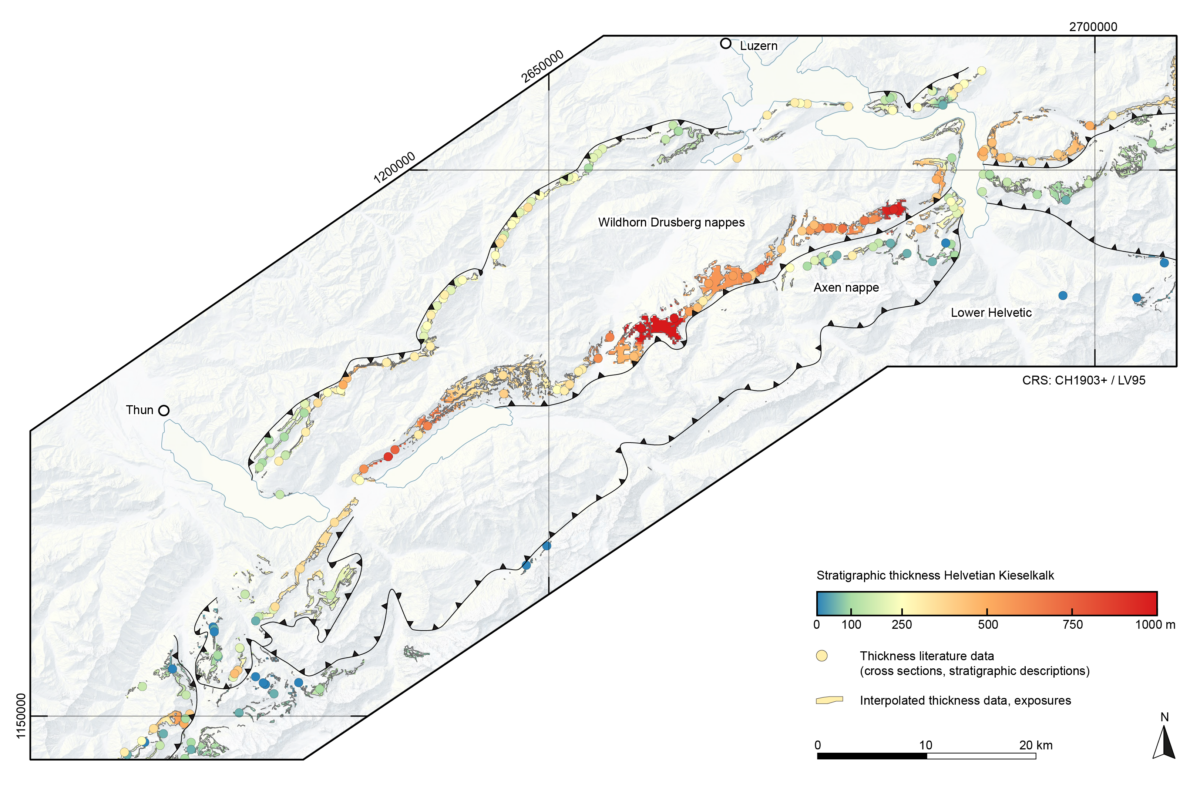The construction and maintenance of the Swiss railway and road infrastructure depends on the availability of high-quality hard rock aggregates. Suitable lithologies, which are typically extracted in Switzerland, are siliceous limestones and particularly strong sandstones.
In collaboration with the Swiss Geological Survey (swisstopo), we develop and maintain a countrywide geospatial database of potential hard rock occurrences. This dataset will support spatial planners in securing the access to these important raw materials. To rapidly and reliably localise relevant occurrences, we developed a semi-automated evaluation procedure. In this procedure, we focus on the estimation of (1) the orientation and thickness and (2) the petrophysical properties of the target lithologies. Thickness estimates are processed through a new Matlab-based routine which automatically extracts orientation and layer thickness data from vectorised geological maps (Figure 1, Juchler, 2022 and Nibourel et al., submitted). The petrophysical properties are assessed through the compilation of published lithostratigraphic descriptions and completed through field and lab investigations at selected key sites (Coray, 2021; Mayer, 2022).
Preliminary results from central Switzerland highlight strong thickness variations in the Helvetian Kieselkalk (siliceous limestone), the most extracted hard rock unit in Switzerland (Figure 2). Discrete jumps in thickness can be observed across major nappe boundaries between the Wildhorn Drusberg nappe, the Axen nappe and the Lower Helvetic. In the Lower Helvetic, the thickness of the Helvetian Kieselkalk is mostly lower than 50 m, so that these are not considered in the inventory of potential hard rock occurrences.
The semi-automated and standardised approach increases the quality, objectivity and reproducibility of our results and highlights areas where a sufficiently large volume of high-quality material is available. The developed methodology is widely applicable in the field of mineral exploration and will be applied for the evaluation of other mineral resources in Switzerland.
- Coray, M. (2021). Hohgant-Sandstein als potentielles Hartgestein. Bachelor thesis, ETH Zurich.
- Mayer, I. (2022). High-quality sandstones for the use as hard rock aggregates – petrophysical properties of the Hohgant-Sandstone. Bachelor thesis, ETH Zurich.
- Nibourel, L., Morgenthaler, J., Grazioli, S., Schumacher, I., Schlaefli, S., Galfetti, T. & Heuberger, S. (2023). Automated extraction of orientation and stratigraphic thickness from geological maps. Journal of Structural Geology 172, 104865.





